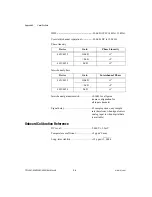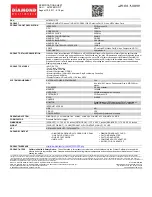
Chapter 6
Theory of Analog Operation
©
National Instruments Corporation
6-11
PCI-4451/4452/4453/4454 User Manual
Analog Output Circuitry (PCI-4451/4453 Only)
♦
PCI-4451
The PCI-4451 has two identical analog output channels. A block diagram
of one channel is shown in Figure 4-6,
. The PCI-4451 can drive the output signal as
SE or DIFF and allows for attenuation of the signal by 0, –20, –40 dB.
♦
PCI-4453
The PCI-4453 has two identical analog output channels. A block diagram
of one channel is shown in Figure 4-7,
. The PCI-4453 drives the output signal as SE
only and does not allow for attenuation.
♦
PCI-4451/4453
A common application for the analog output is to stimulate a system under
test while measuring the response with the analog inputs. The input and
output sample clocks are synchronized and derived from the same DDS
clock. The input and output clocks can differ from each other by a factor of
2 (1, 2, 4, 8,
...
128) while still maintaining their synchronization. Output
conversions occur simultaneously at software-programmable rates from
1.25 to 51.2 kS/s in increments of 47.684
µ
S/s.
The analog output circuitry uses eight-times oversampling interpolators
with 64-times oversampling delta-sigma modulators to generate
high-quality signals. The output channel has a range up to ±10 V
(7.07 V
rms
).
Because of the delta-sigma modulating DAC, the device is immune to DNL
distortion. The analog output stage generates signals with extremely low
noise and low distortion. Because the device has a 90 dB dynamic range, it
is possible to generate low-noise waveforms. The device also has excellent
amplitude flatness of ±0.2 dB within the frequency range of DC to 23 kHz
and has a THD of
−
90 dB at 1 kHz. With these specifications, you are
assured of the quality and integrity of the output signals generated.
















































